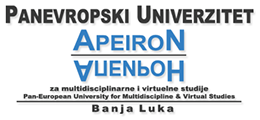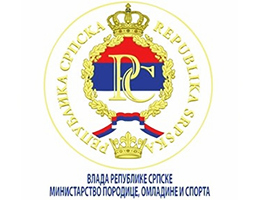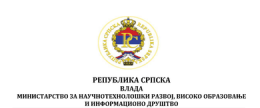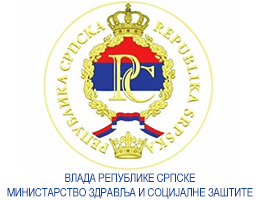DEVELOPMENT OF IA TRAINER LEARNING MEDIA BASED ON ANDROID APPLICATION TO IMPROVE GROUNDSTROKE ABILITY OF BEGINNER TENNIS PLAYERS
Volume 15, Issue V (2025)
Volume 15, Issue V (2025)
DEVELOPMENT OF IA TRAINER LEARNING MEDIA BASED ON ANDROID APPLICATION TO IMPROVE GROUNDSTROKE ABILITY OF BEGINNER TENNIS PLAYERS
Apstrakt:
The tennis lecture process that has been carried out so far is still conventional, so it is less effective in improv- ing the learning outcomes of beginner tennis players. Therefore, a more effective learning media is needed and can trigger an increase in the learning outcomes of beginner tennis players. This study aims to develop learning media that suits the needs of beginner tennis players in tennis lectures. For this reason, researchers developed an android application-based IA trainer learning media to improve the groundstroke ability of beginner tennis players at FIK UNM. The feasibility test of the developed media was carried out by involving expert validators in conducting media validation, learning media valida- tion, and material validation. Based on the average results of product validation, a score of 90.4% was obtained which was categorized as very feasible. So it can be concluded that the learning media IA trainer based on android applications to improve the groundstroke ability of beginner tennis players at FIK UNM is very feasible to use. Meanwhile, based on the results of the paired sample t test, the mean value of the beginner tennis player’s groundstroke pre-test data is 13.55 and the mean groundstroke post-test data is 17.67, so that the mean difference is 4.117. So from the test results it is known that the groundstroke ability of beginner tennis players has increased. The results of the effectiveness test on the paired sample t test results above show that the difference in the pre-test and post-test results of beginner tennis player groundstroke skills. Based on the results of the study, it can be concluded that the android-based IA trainer media has an effect on improving the groundstroke skills of beginner tennis players.
Ključne riječi:
Development, Learning Media, Groundstroke, Tennis
Puni tekst:
Reference:
Abdulrahaman, MD, Faruk, N., Oloyede, AA, Surajudeen-Bakinde, NT, Olawoyin, LA, Mejabi, OV, Imam-Fulani, YO, Fahm, AO, & Azeez, AL (2020). Multimedia tools in the teaching and learning processes: A systematic review. Heliyon, 6(11).
Alim, A., & Nurfadhila, R. (2021). Reliabilitas test-retest dyer tennis test revision. Jurnal Keolahragaan, 9(1), 43-50. https://doi.org/10.21831/ jk.v9i1.39122
Andriyani, NL, & Suniasih, NW (2021). Development of learning videos based on problem-solving characteristics of animals and their habitats contained in IPA subjects on 6th-grade. Journal of Educational Technology, 5(1), 37–47.
Barut Tugtekin, E., & Dursun, O.O. (2022). Effect of animated and interactive video variations on learners’ motivation in distance education.
Education and Information Technologies, 27(3), 3247–3276.
Campbell, S., Greenwood, M., Prior, S., Shearer, T., Walkem, K., Young, S., Bywaters, D., & Walker, K. (2020). Purposive sampling: complex or simple? Research case examples. Journal of Research in Nursing, 25(8), 652–661.
Cojean, S., & Jamet, E. (2022). Does an interactive table of contents promote learning from videos? A study of consultation strategies and learning outcomes. British Journal of Educational Technology, 53(2), 269–285.
Galatsopoulou, F., Kenterelidou, C., Kotsakis, R., & Matsiola, M. (2022). Examining students’ perceptions towards video-based and video- assisted active learning scenarios in journalism and communication courses. Education Sciences, 12(2), 74.
Hardiansyah, F., & others. (2022). Improve Science Learning Outcomes for Elementary School Students Through The Development of Flip- book Media. Journal of Science Education Research, 8(6), 3069–3077.
Harrison, T. (2020). How distance education students perceive the impact of teaching videos on their learning. Open Learning: The Journal of Open, Distance and e-Learning, 35(3), 260–276.
Kustyarini, K., Utami, S., & Koesmijati, E. (2020). The importance of interactive learning media in a new civilization era. European Journal of Open Education and E-Learning Studies, 5(2).
Lange, C., & Costley, J. (2020). Improving online video lectures: learning challenges created by media. International Journal of Educational Technology in Higher Education, 17, 1–18.
Manca, S. (2020). Snapping, pinning, liking or texting: Investigating social media in higher education beyond Facebook. The Internet and Higher Education, 44, 100707.
Ngatman, N., Guntur, G., Yuliarto, H., & Sridadi, S. (2022, January). Development of “Authentic Assessment” Instruments Basic Forehand and Backhand Groundstroke Techniques Based On “Actions Method” Learning Outcomes of Field Tennis Courses for Faculty of Sports Science of Yogyakarta State University Students. In Conference on Interdisciplinary Approach in Sports in conjunction with the 4th Yo- gyakarta International Seminar on Health, Physical Education, and Sport Science (COIS-YISHPESS 2021) (pp. 56-63). Atlantis Press.
Noetel, M., Griffith, S., Delaney, O., Sanders, T., Parker, P., del Pozo Cruz, B., & Lonsdale, C. (2021). Video improves learning in higher educa- tion: A systematic review. Review of Educational Research, 91(2), 204–236.
Purwono, Y., Sulasmiyati, S., Susiana, H., Setiawan, A., Roslaini, R., Harefa, D., & Prihatni, Y. (2023). The development of an attitude mea- surement instrument of responsibility for primary school students. Arisen: Assessment and Research on Education, 5(1), 1–9.
Queiroz, A. C., Fauville, G., Herrera, F., Leme, M. I., & Bailenson, J. N. (2022). Do students learn better with immersive virtual reality videos than conventional videos? A comparison of media effects with middle school girls. Technology, Mind, and Behavior, 3(3).
Rahardjanto, A., & Husamah, H. (2022). Publication Trend of R\&D in the Journal of Biological Education in Indonesia (Sinta 2: 2017-2021): A Systematic Literature Review. Prisma Sains: Journal of Science and Mathematics and Science Learning Studies IKIP Mataram, 10(1), 21–35.
Rahma, M. (2024). Choreography Teaching Module Design (With The Borg And Gall Approach). International Conference of Business, Edu- cation, Health, and Scien-Tech, 1(1), 359–368.
Rasminto, H., & Purwantini, K. (2024). Application Of GIS To Mapping Service Center Geographic Information Systems Using The Simple Additive Weighting (SAW) Method. International Journal of Electrical Engineering, Mathematics and Computer Science, 1(1), 36–46. Susanto, S. et al. (2022). Traditional Sport-Based Physical Education Learning Model in Character Improvement and Critical Thinking of
Elementary School Students. SPORTS SCIENCE AND HEALTH, 24(2), 165-172.
Susanto, S., Setyawan, H., García-Jiménez, J. V., Pavlovic, R., Nowak, A. M., & Susanto, N. (2024). Analysis of One-Hole Game Tools in Developing Fine Motor Skills in Early Childhood. SPORTS SCIENCE AND HEALTH, 27(V), 135-139.
Susanto, S., Setyawan, H., Susanto, N., García-Jiménez, J. V., Latino, F., Tafuri, F., & Eken, Ö. (2024). The Influence of Modified One-Hole Game Media in Improving Fine Motor Skills in Early Childhood. SPORTS SCIENCE AND HEALTH, 27(V), 151-156.
Susanto, S. (2024). The Effect of Using a Paralon Bow on the Archery Performance of Novice Athletes. Innovative: Journal Of Social Science Research, 4(3), 11185-11197.
Susanto, S., Siswantoyo, S., Prasetyo, Y., & Putranta, H. (2021). The effect of circuit training on physical fitness and archery accuracy in novice athletes. Physical Activity Review, 1(9), 100-108.
Syafruddin, A. (2023). THE ROLE OF EDUCATIONAL TECHNOLOGY IN CHANGES IN PHYSICAL EDUCATION LEARNING. Jour-
nal of Educational Technology, 3(2), 36–44.
Tuma, R. (2020). PROFESSIONAL INTERPRETATION IN SPORTS TRAINING: AN ANALYSIS OF THE COMMUNICATIVE PRAC-
TICES OF VERNACULAR VIDEO ANALYSIS. The Sociological Annual/Годишњак За Социологију, 16(25), 9–31.
Van Den Beemt, A., Thurlings, M., & Willems, M. (2020). Towards an understanding of social media use in the classroom: a literature review.
Technology, Pedagogy and Education, 29(1), 35–55.






